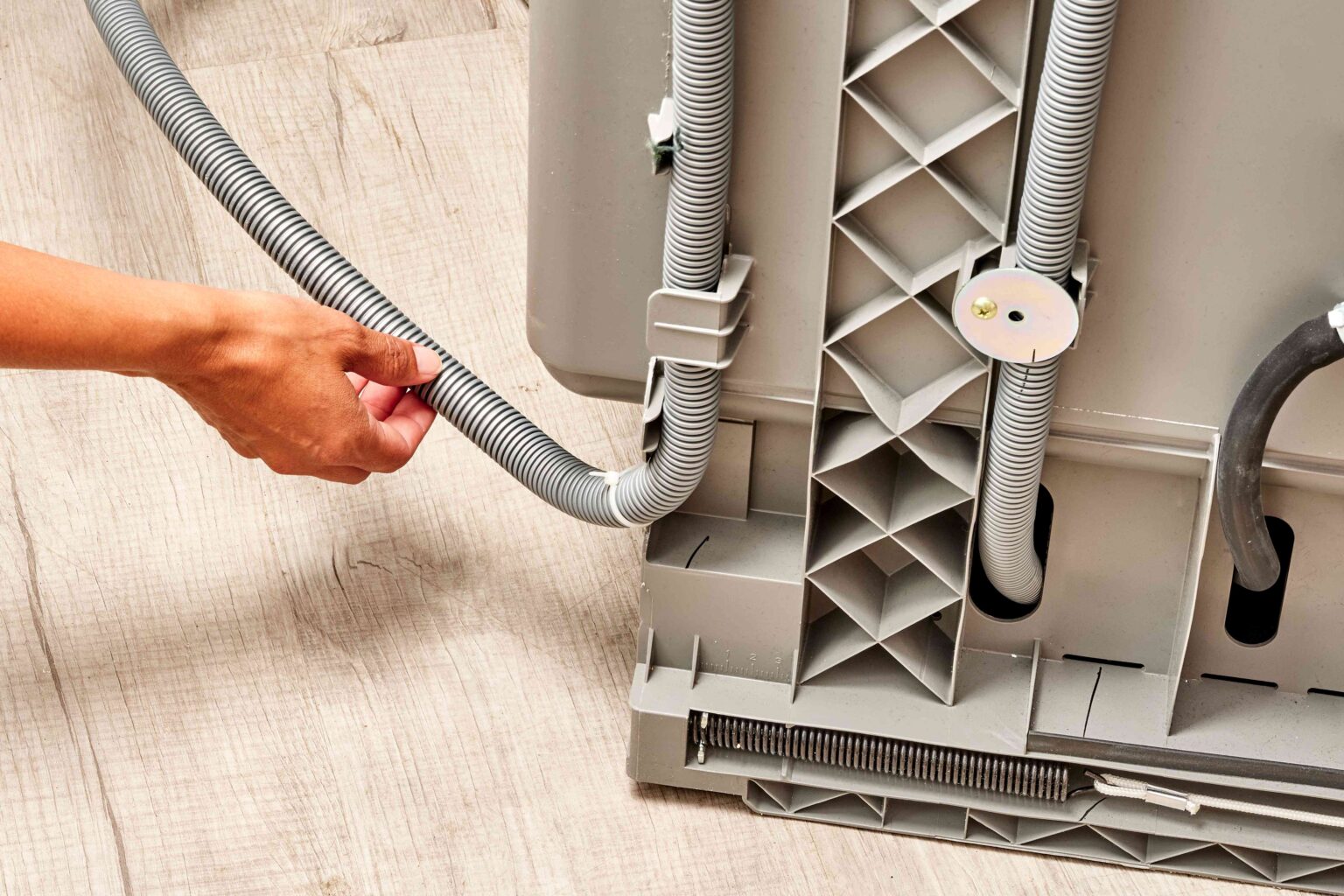Hooking up the drain is usually pretty easy as part of the overall installation of a dishwasher. Still, it’s essential to understand the different options when learning how to connect a dishwasher drain hose to a garbage disposal or directly to a drain.
If you are removing and replacing a dishwasher with a new one, copy the same drain hookups used on the old dishwasher is usually easiest. But if you add a dishwasher for the first time, you may need to install a special drain fitting known as a Y-branch tailpiece to allow dirty water to flow into your drain system.
These are the different drain variations you may encounter:
- A drain line is connected through an air gap to the garbage disposal.
- The drain line is connected through an air gap directly to the drain.
- The drain line is configured in a high loop to the garbage disposal.
- The drain line is configured in a high loop directly to the drain.
An air gap fitting is a safety device mounted on your sink or countertop. It passes the dishwasher hose to the drain through it, providing a pressure break in the drain line that prevents dirty drain water from being back-siphoned into a dishwasher filled with clean dishes.
Not all dishwashers use this device; another alternative is the high loop installation, in which the drain line loops up under the sink base cabinet to a point above the dishwasher’s water level to prevent backflow.
The tools and materials you need to connect a dishwasher drain will vary, depending on the configuration and whether or not there is an air gap. In all cases, turn the water off under the sink and unplug your garbage disposal (if you have one) before beginning.
Need more help? Talk to a plumber near you
Our partners can help you compare quotes from top-rated professionals near you
Get a Quote
The offers that appear in this table are from partnerships from which The Spruce receives compensation.
Read the full article here

